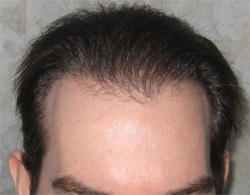 People who experience hair loss on their scalps may benefit from a hair transplant. Men with male pattern balding, for example, lose hair from the front and top of the scalp, while their hair on the sides and back of their heads remain. Some of the hair follicles on the sides and back can be transplanted to the balding areas. These hair follicles will grow healthy hair that regenerates normally. A skilled hair transplant doctor who focuses exclusively on hair transplants, such as Dr. Larry Shapiro, the Southern Florida hair transplant doctor who has hair transplant clinics near Ventura and Boca Raton, can select the hairs carefully and transplant them to create a totally natural look.
People who experience hair loss on their scalps may benefit from a hair transplant. Men with male pattern balding, for example, lose hair from the front and top of the scalp, while their hair on the sides and back of their heads remain. Some of the hair follicles on the sides and back can be transplanted to the balding areas. These hair follicles will grow healthy hair that regenerates normally. A skilled hair transplant doctor who focuses exclusively on hair transplants, such as Dr. Larry Shapiro, the Southern Florida hair transplant doctor who has hair transplant clinics near Ventura and Boca Raton, can select the hairs carefully and transplant them to create a totally natural look.
The idea of “donor dominance” has underlain hair transplant theory since Dr. Norman Orentreich coined the term in the 1950’s. The theory is that when a hair follicle is transplanted to a new location, it will maintain its original characteristics.
For example, with male pattern hair loss, the hair on the top and sides of the scalp are genetically pre-programmed to be more sensitive to testosterone. As men age, they produce more testosterone, and therefore, these hairs start to fall out. But the hairs on the back and sides of the scalp are not pre-programmed to respond so strongly to testosterone, so they do not permanently fall out, even when transplanted to the top and sides of the scalp. This means that hair transplant surgery is a permanent solution for male pattern balding.
A 2002 study sought to determine whether transplanted hairs take on some of the characteristics of hair patterns at the new site. They performed a few experimental transplantations from one part of the body to another (such as from the scalp to the leg, etc.). Leg hairs grow more slowly, and indeed, the hair transplanted from the scalp to the leg grew more slowly. The researchers determined that the recipient location affects some characteristics of the transplanted hairs, including their growth and survival rates.
This part of the research may affect how certain types of hair transplants to other parts of the body may be conducted in the future, such as the eyebrows, perhaps in cases of disfigurement.
Regarding transplantation from one part of the scalp to another, however, researchers confirmed that donor dominance stays in effect on the scalp. This study carefully observed 12 patients with male pattern balding for about one year after their transplants. Researchers measured the survival rates of the hair (whether the hair follicle grew hair and replenished hair that fell out naturally), and the growth rate, as well as the diameter of the hair shafts.
The study found no significant difference between the hairs transplanted to the front of the scalp, and the original donor sites on the back and/or sides of the scalp. Therefore, hair transplantation from the scalp, to the scalp, is a permanent and quite reliable technique for dealing with male pattern balding.
Source: Hwang SM et al. Does the Recipient Site Influence Hair Growth Characteristics in Hair Transplantation? Dermatol Surg 2002; 28(9): 798-99.